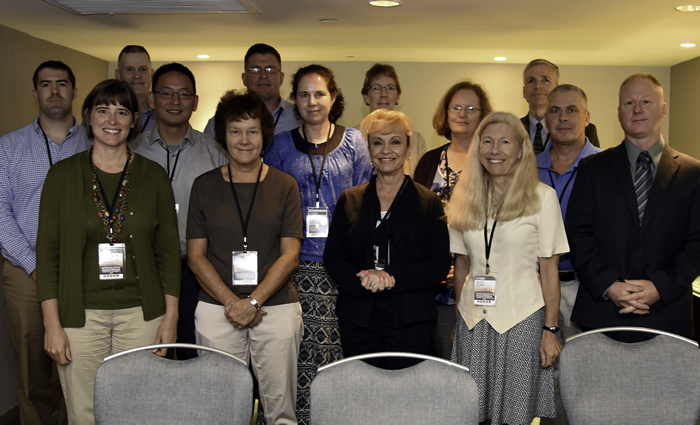Joint Combat Casualty Research Team Discusses Future Field Work

Lt. Col. Jennifer Hatzfeld, director of the En Route Care Portfolio for the Combat Casualty Care Research Program, sat at the front of a small conference room, flipping through slides on the projector. Up on the screen flashed pictures from the Middle East, various memories from a warzone, snapshots of team members gathered together in Afghanistan, Iraq, or some military base far from home.
"Oh, I remember that day," said audience member Lt. Jacob Norris, a research psychologist at the Naval Medical Research Center, pointing to one of the images.
"Yeah," said Maj. Ian Dews, Military Deputy Director of the Combat Casualty Care Research Program, seated on the other side of the room, "you forget how hot it gets over there."
"Everyone forgets," said Cmdr. Gail Chapman, Navy Liaison with the Military Infectious Diseases Research Program, shaking her head. "I probably should've taken more pictures, huh?"
It was a lot of chatter for a small group, but that's how things tend to go when members of a military unit talk shop. In this case, that unit is the Joint Combat Casualty Research Team, or JC2RT. From 2006 to 2014, the JC2RT existed as a small group of scientists and clinicians tasked with facilitating ethical and operationally relevant medical research while in the overseas theater of operations. Deployments for team members rotated every six months.
This year for the first time, more than a dozen members of the JC2RT gathered on Aug. 19, at the annual Military Health System Research Symposium in Fort Lauderdale, Florida, to not only talk about their shared past, but also to plot a course for the unit's future.
"It always felt like what you were doing over there was so important, but so difficult," said Hatzfeld. "So getting together like this, in this way, it's almost like a support group."
During the recent conflicts in the Middle East, various iterations of the JC2RT were deployed to help facilitate in-theater research on such conditions as traumatic brain injury and various bleeding disorders. The relatively small size of the group ' usually only a handful of people per deployment - required members to juggle multiple tasks on their own, including data collection, sample reporting, and the review and approval of multiple research protocols.
"When you're working like that, you capture the good, the bad and the ugly parts of the whole process," said Dews describing the 'one-man band' style of approach to research.
In addition to recounting the past, the group also tried to carve out a path for the future of the program, including efforts to develop policies to interface with other existing research labs and create the infrastructure that can adequately support future deployed research teams.
"We need to keep the light burning," said Col. Todd Rasmussen, director of the U.S. Army Medical Research and Materiel Command's Combat Casualty Care Research Program, "which is why the home of the JC2RT should be the CCCRP."
With such high-level support now stabilizing the team, the collective focus of the JC2RT shifts to the future, to the next time they're needed in a war zone, to the next time they're needed for the sake of the Warfighter.
"We're going to need to keep doing this to ensure that this kind of medical research can continue in the middle of a war zone," said Hatzfeld. "It's one of the best ways we can learn to provide the best possible combat casualty care and improve trauma care in the process."














